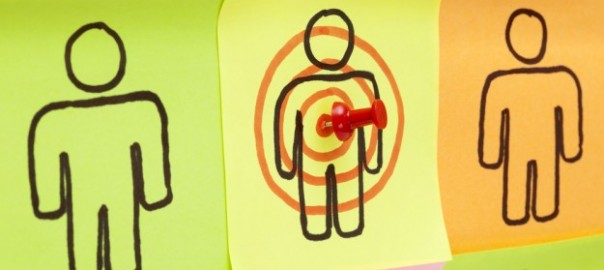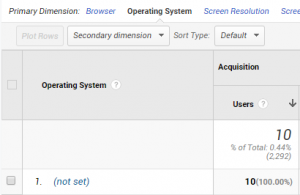If you were to build a business empire that serves your own interests—a business that solves your problems, how easier would that be? Developing products and designing effective marketing campaigns is much easier when you have a fictional character that models your customer, and when you happen to be the customer then you have a huge advantage to yourself. Entrepreneurs bent on solving problems that they too experience, understand their customer better and can easily anticipate their customer’s reaction to a particular marketing model. In this case, you begin to see your business through the eyes of your customer. This might not be possible when you are not the customer of your business, and in such a case, you have to develop a fictional character that represents the very customer base that you target. These made-up characters are your buyer personas.

Buyer personas, like marriages, are not rushed: They are well thought-out and tuned up to guide product development and marketing efforts. Would you take a gamble? Try these tested steps:
- Source Customer Data
To adequately understand your buyers, their thoughts, behavior, buying patterns and their inner “why”, you need a creative data sourcing idea. You have to perform a qualitative research that seeks to understand what exactly motivates your target buyer. Plan to collect data from your real buyers and prospects through online and offline surveys, phone and in-person interviews, and social media interactions. Your sales and customer service team is integral to this process. There is so much that you can grab about your customer from Facebook insights, Twitter analytics, and other online forums. As you gather your data, focus on digging out personal information, customer demographics, interests, aspirations, motivations, challenges, pain points, and objections. Only after you’ve gathered this information will you be able to help your customers accomplish their goals through your product.
- Segment the Buyer
Once you’ve collected accurate customer data, it’s time to find your ideal market segments—distinguish your buyer “types”. At this stage, focus on assigning unique attributes to your customer types, perhaps even marking each buyer group with some headshot. Segmentation should be based on specific business characteristics shared by some group of customers. You can then use the crafted segments to develop archetypal customers that embody specific group signals inspired by customer behavior. Your segments may reflect:
- New customers versus repeat customers
- Corporate customers versus niche business customers
- Average customer revenue
- Frequent customers
With this information, planning your overall marketing and content strategy becomes a lot easier. You can also segment these groups further to have more specific personas.
- Model the Buyer Mentally—Visualize your Buyer
To create an effective buyer persona, you need to conjure up some “real” people. Give them some identity like a name or image to represent them. This is where you come up with a clear description for the various customer types that you crafted in step two. Each description should reflect unique signals about the buyer’s job, age, income status, needs, goals, and key role. Attempt to answer these questions:
- Who’s he?
- What’s his job title?
- What’s his work industry?
- What’s his typical workday?
- Define Business and Personal Goals that Drive Buyer Behavior
Seek to identify both personal and business goals that drive the shopping patterns of your audience. Goals differ from one buyer group to another; goals may sometimes be unrealistic and not possible to achieve using your product. In your product development and marketing strategy, strive to marry up your customer’s goals and your product.
- Define the Buyer’s Challenges
With information about your buyer’s gender, age, education, profession, interests, marital status, net worth, financial situation, and geographical location, you can now identify their primary and secondary challenges. What are their pain points? Find out what frustrates your buyer on the job and think of alleviating such feelings. At this stage, think of how you can solve these challenges to the satisfaction of each buyer “type”. One way of doing that would be adding value to your sales process.
- Empathize with Buyer Challenges
Both product development and marketing strategies should seek to address challenges reported by buyer groups. To set the right pitch for persona development, walking in your customer’s shoes is of the essence. When you understand their emotions and how they feel about their jobs, developing products that adequately serve their needs becomes easier.
- Discover Triggers and Key Objections
There are numerous aspects that define your success as an entrepreneur, and one of them is being able to respond to objections raised by your prospects toward your product. For every buyer group, identify what stops your product from ticking. Is it capital expenditure or usability? If your product is costlier than that of your competitor, clearly explain to the buyer what makes your product superior. Look for triggers as well; this could be issues with cost-savings, scalability, ease of use, or short timeline for migration. Understanding existing triggers and objections will help you develop a content marketing strategy that’s customer focused.
- Identify Marketing Channels Preferred By the Buyer
Based on the collected data, seek to discover marketing channels that will most likely reach a particular buyer “type”. Which marketing channel has higher conversion rate? Is there a niche online platform associated with your audience? For instance, LinkedIn would be your best bet if your target audience belongs to the professional class. Mapping your customer’s online behavior helps you understand their favorite topics and interests as well.
- Aggregate Customer Quotes into Solid Buyer Personas
Great buyer personas are built on genuine customer interests and opinions about your product. This is where both positive and negative feedback from your customers shape the entire process of building buyer personas. Actual customer quotes from previous interviews and chat sessions are critical at this stage. Based on these quotes, you are able to discover your customer’s likes and dislikes, as well as their attitude about your product.
- Breathe Life into your Personas
This is the last stage after defining your personas. During this stage, you are required to develop a customized marketing campaign that transforms these buyer personas into actual customers. This is referred to as the buying journey. Understand the journey that the buyer walks before buying your product and develop a message that directly addresses his concerns through an informed content strategy.
(166)





